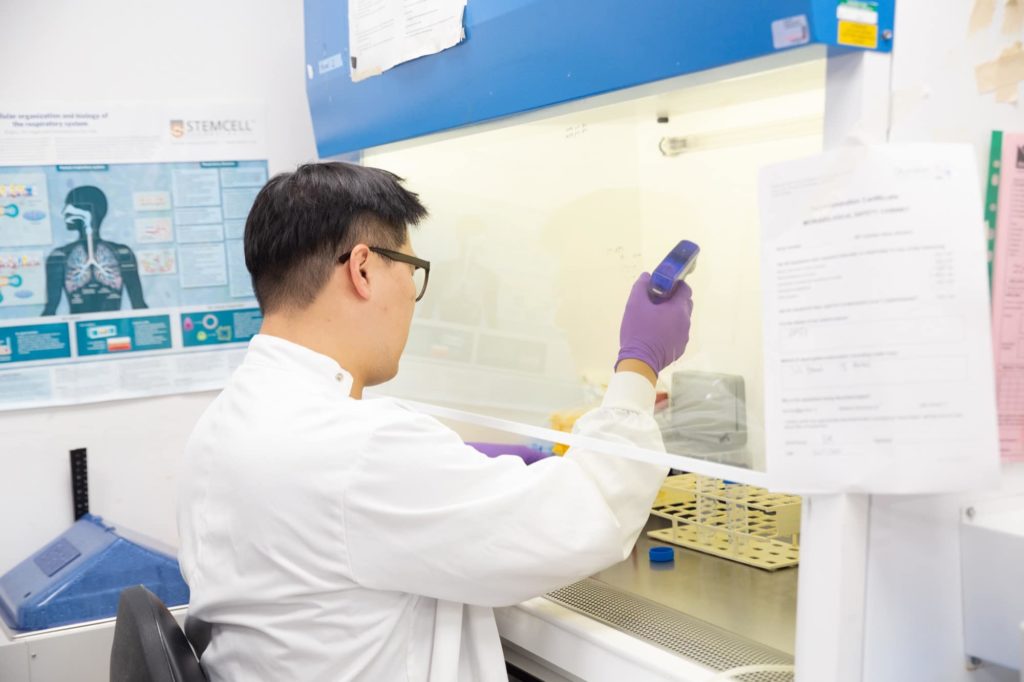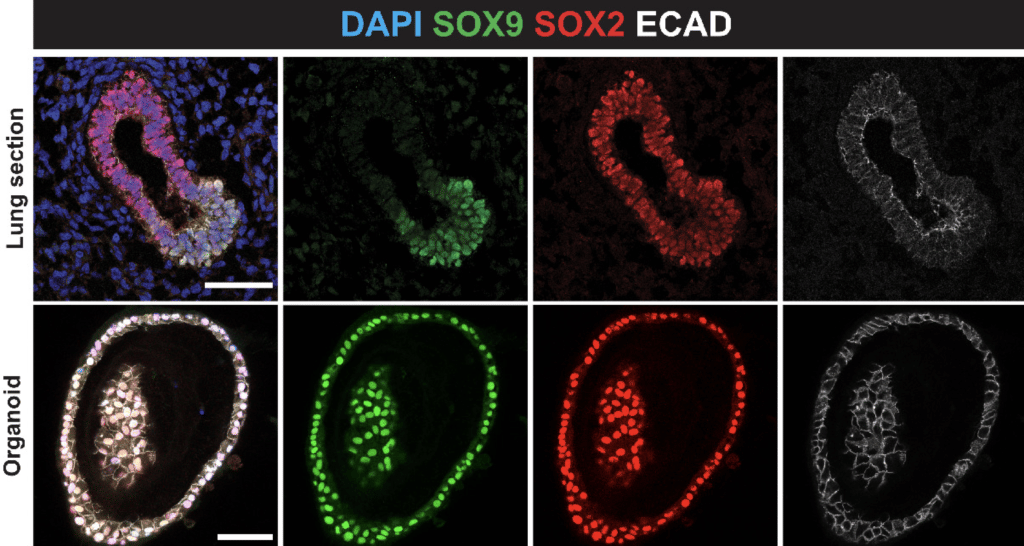Fat flies – a slimmed down model of human obesity
November 8, 2021
Read more
Using a CRISPRi screen in human lung organoids the researchers show that the key transcription factor is SOX9, which functions by both promoting proliferation and inhibiting differentiation. Then applying Targeted DamID to identify SOX9’s direct binding sites, they reveal the relevant targets as WNT and RTK signalling.
Sun D et al. (2022) SOX9 maintains human foetal lung tip progenitor state by enhancing WNT and RTK signalling. The EMBO Journal e111338. DOI: 10.15252/embj.2022111338.

Fig 2A excerpt from Sun D et al.
The balance between self-renewal and differentiation in human foetal lung epithelial progenitors controls the size and function of the adult organ. Moreover, progenitor cell gene regulation networks are employed by both regenerating and malignant lung cells, where modulators of their effects could potentially be of therapeutic value. Details of the molecular networks controlling human lung progenitor self-renewal remain unknown.
We performed the first CRISPRi screen in primary human lung organoids to identify transcription factors controlling progenitor self-renewal. We show that SOX9 promotes proliferation of lung progenitors and inhibits precocious airway differentiation. Moreover, by identifying direct transcriptional targets using Targeted DamID, we place SOX9 at the centre of a transcriptional network, which amplifies WNT and RTK signalling to stabilise the progenitor cell state.
In addition, the proof-of-principle CRISPRi screen and Targeted DamID tools establish a new workflow for using primary human organoids to elucidate detailed functional mechanisms underlying normal development and disease.